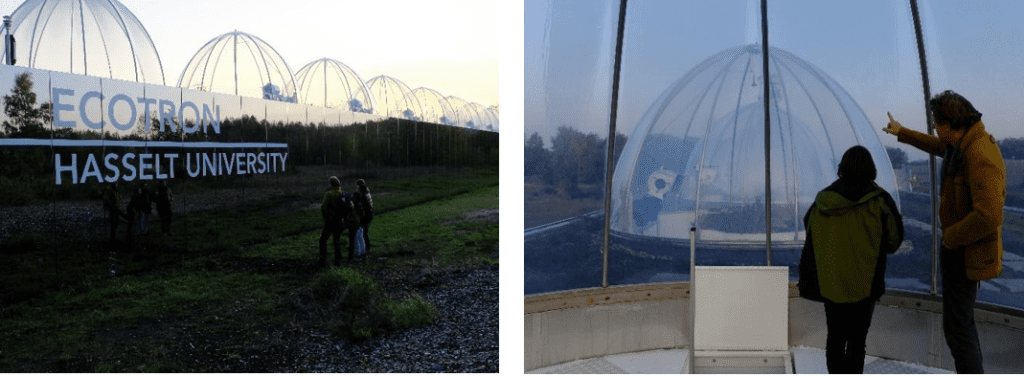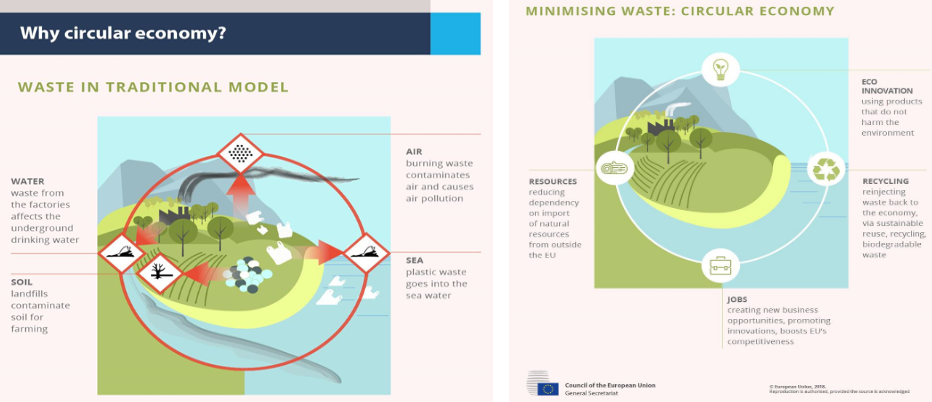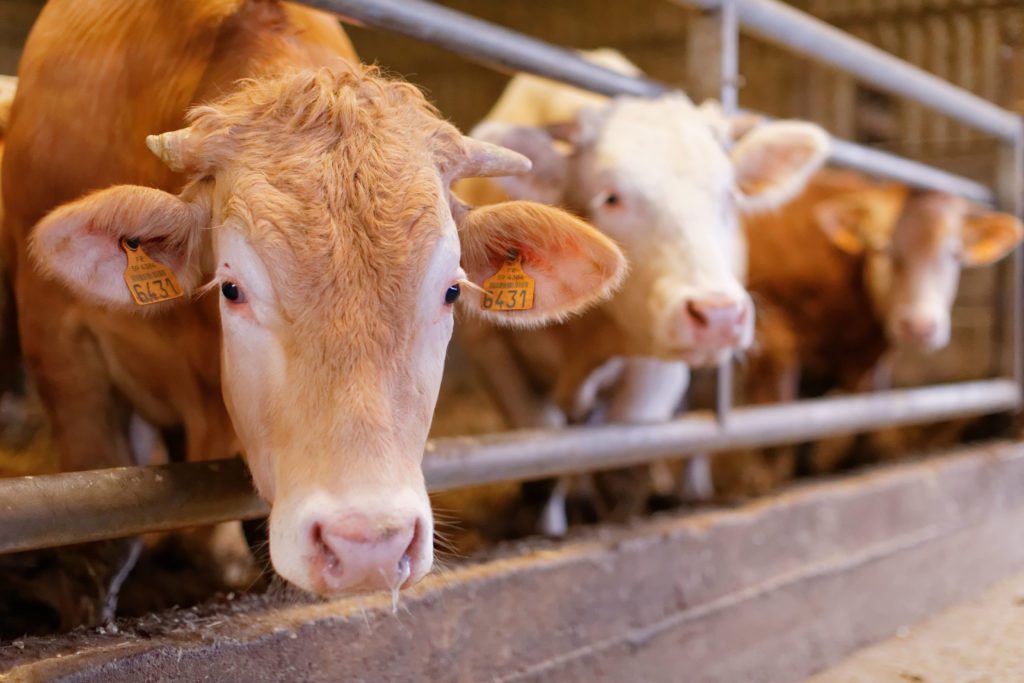Bohemian Switzerland © V.Sojka
In December 2019, the new European Commission, nominated only few months earlier, publishes the Communication on the new EU Green Deal. Few weeks later, the new European Parliament reacts positively approving in January 2020 the Resolution on the EU Green Deal. The Green Deal becomes therefore one of the most important priorities of the European Union.
The ambitious text of the Commission sets out the new green vision and is a “roadmap” for future legislation. It is a reference document announcing the key policies and measures necessary to achieve the Green Deal. The Green Deal reiterates the European Union’s commitment to addressing climate and environmental challenges at internal and international level.
The European Green Deal is our roadmap for making the EU’s economy sustainable. This will happen by turning climate and environmental challenges into opportunities across all policy areas and making the transition just and inclusive for all. (European Commission)
All info about the European Green Deal: Striving to be the first climate-neutral continent, here.
The complete document in all EU official languages is available here. The Roadmap with the key actions is available here.
Nature within the Green Deal: a key topic

Naturpark / Grenspark Maas-Schwalm-Nette (Germany, The Netherlands) © photo M. Hectors
Protected Areas as key actors to contribute to the implementation of the Green Deal.
The Green Deal addresses all spheres of society and calls for a transition in all sectors, underlying the idea of “mainstream environment“. Addressing a multiplicity of topics, the Green Deal embraces a holistic approach reaffirming the interconnection of challenges and the need of policy coherence. Cooperation with all actors is also promoted to reach the transition.
EUROPARC Federation considers that the Green Deal is a great opportunity to reiterate the importance of the European Protected Areas and their action to connect nature with all the spheres of the society.
Read the letter of EUROPARC to the European institutions supporting the EU Green Deal
All EU policies should contribute to preserving and restoring Europe’s natural capital. (EU Green Deal)
Biodiversity

The Green Deal Communication is clear about the importance of biodiversity protection: Ecosystems provide essential services such as food, fresh water and clean air, and shelter. They mitigate natural disasters, pests and diseases and help regulate the climate. However, the EU is not meeting some of its most important environmental objectives for 2020, such as the Aichi targets under the Convention on Biological Diversity. The EU and its global partners need to halt biodiversity loss.
The communication on the Green Deal mentions some specific points such as:
- Increasing the coverage of protected biodiversity-rich land and seas areas building on the N2000 network (Legally protect a minimum of 30% of the EU’s land areas and 30% including 10% under strictly Protected Areas”)
- Improve cross-border cooperation to protect and restore N2000 Network
- To draft a nature restoration plan and will look at how provide funding to help Member State to reach this aim
- To green European cities
To reiterate and precise these commitments, at the end of May 2020 the Commission published the Biodiversity Strategy 2030.
EUROPARC Federation followed the policy-process closely and provided inputs with the EUROPARC Contributions to the public consultation and through the EHF Recommendations for the post-2020 Biodiversity Strategy.
EUROPARC will continue to follow the development of the initiatives and the actions to implement the Biodiversity Strategy, offering to the EU institutions its unique and wide expertise in Protected Areas and N2000 management, capacity building, partnership with business and cross-border cooperation.
See much more about the Biodiversity Strategy here.
Forests

Parque Natural Montseny (ES) © Photo L. Martínez
The European Parliament “recalls that forests are indispensable to our planet and biodiversity”.
Some key points are underlined in the Green Deal communication:
- Sustainable afforestation, preservation and restoration
- Recognition of the multiple benefices of forests
- Role in absorption of CO2
- Improving the resilience of forest
- Promoting the circular bio- economy
The new EU Forest Strategy will probably be published in 2021.
At EUROPARC Federation, many of our members are in charge to manage forests areas.
The LIFE RedBosques project has formulated some challenges and management recommendation which should be considered within the new EU Forest Strategy from the perspective of Mediterranean forests. Have a look to our article!
Climate

The ecotron in Hoge Kempen National Park (BE) exposes large ecosystem samples (“mesocosms”) to highly controlled climate conditions, and monitors their response. © Photo S. Petrosillo
The Green Deal aims for the European Union to become a leader in climate action by converting our territory into the first carbon-free continent by 2050.
Climate policy should be at the heart of the European Union’s policies with two objectives:
- mitigation (mitigating climate change with low-carbon measures or by offsetting)
- adaptation (as climate change is already a visible phenomenon that will worsen, measures are needed to adapt to the new reality). Thus, sectors with the greatest impact on climate change are developed in the document: energy, industry, transport and infrastructure.
To reach the objective of 50% toward 55% of reduction of greenhouse gas emission reductions compared with 1990 levels, the Commission will review and propose to revise where necessary all relevant climate-related policy : New EU Climate law, Emission Trading System, regulation on land, land use change and forestry.
The energy transition toward a renewable energy model is a priority. To address the climate crisis, the Green Deal must transform the most greenhouse gas emissions-intensive sectors : energy, industry and transport. Those sectors have an indirect impact on nature: “clean source energy” such as solar panel, wind turbines and dams can affect ecosystems and biodiversity through disturbance and loss of habitat, noise pollution, collision or other indirect pressures. All these aspects have therefore to being taking in consideration.
EUROPARC project’s Natur’adapt is exploring the impact of Climate Change to Protected Areas management and how Protected Areas can be also part of the solution. To learn more on Protected Areas and EU Climate Law.
Blue Economy

Kornati National Park (HR) © Photo Najada Diving Ltd
A sustainable ‘blue economy’ will have to play a central role in alleviating the multiple demands on the EU’s land resources and tackling climate change. (EU Green Deal p.14)
In the Green Deal communication, the following points emerge from the latter:
- The Commission will support more connected and well-managed marine protected areas
- Recognition of the role of oceans in mitigating and adapting climate change
- Recognition of the need to preserve and restore biodiversity of lakes, rivers, wetlands and estuaries
- Based on the IPCC report on oceans, measures to manage maritime space more sustainably will be proposed
- Recognition of the need to improve the use of aquatic and marine resource (For instance it can be a new sources of protein that can relieve pressure on agricultural land)
- Zero-tolerance approach to illegal, unreported and unregulated fishing
- An “Oceans and Aquaculture Action Plan” is expected. It may include “concrete actions bringing together an integrated strategic vision towards maritime policy issues such as transport, innovation and knowledge, biodiversity, the blue economy, emissions, waste and governance.”
At EUROPARC Federation, we consider Marine Protected Areas essential for the well-being of the planet. If you want to learn more on the topic we invite you to have a look to our Marine & Costal Knowledge Hub. Read also our article Ocean Action!
Circular Economy

For the successful completion of the Green deal and its objective of climate neutrality, a transformation toward a circular economy is promoted, which implies the mobilisation of industries and a transformation in all sectors. The vision proposed is based on green growth, finance and investment to ensure a just transition. Circular economy appears as the logical solution in a world of finite resources. Nature inspires this economic model. Ecosystem is a perfect circular system: it is a complete internal system with no loss.
European Protected Areas participate to the green growth by promoting jobs and activities favourable to nature (such as sustainable tourism, outdoor sports…). They are laboratories for rural development and contribute to a better economic balance between the city and the countryside through nature-based solutions. Europe’s Protected Areas have a long established practise and experience in delivering these multiple benefits and are stand ready to contribute to the Green Deal.
Agriculture

Ferme du Grand porche, Thierry Roger, viande bovine et porc – Parc Naturel Regional Scarpe Escaut © Samuel Dhote
Agriculture is a key sector, not only for human subsistence, but also for biodiversity protection and climate change.
The Green Deal recognises the impact of the sector on nature:
Food production still results in air, water and soil pollution, contributes to the loss of biodiversity and climate change, and consumes excessive amounts of natural resources, while an important part of food is wasted
Thus, the Green Deal vision must be reflected in the EU legislations on agriculture and food production.
The Common Agricultural Policy (CAP) is the main EU legal framework for agriculture development in Europe. To comply with environmental objectives, the new CAP will have to integrate the Green Deal vision. See EU Common Agricultural Policy page.
The EU Farm to Fork Strategy aims to design a fair, healthy and environmentally-friendly food system by readapting all the food value chain: from the farmer to the consumer. With the desire to improve the place of farmers and fishermen in the food production chain and empower the consumer to make informed choices, the Farm to Fork strategy is a key document to ensure safe, nutritious and of high quality food, setting the global standard for sustainability. See the EUROPARC page!
EUROPARC is strongly committed in supporting dialogue between farmers and managers of protected areas, convinced that they can be allied in win-win partnership.
See EUROPARC position paper and the the knowledge hub on sustainable agriculture and Protected Areas to learn more on the topic and to discover the EUROPARC work on sustainable agriculture!
New technologies and Protected Areas
New technologies are an opportunity for sustainable development. Through the exchange of experiences, a transition in all sectors and by involving the communities, it will be possible to combine a “societal pull and a technology push” (EU Green Deal, p.18). The Green Deal considers that it could improve energy efficiency and circular economy performance. It will also help foster transparency through better access to information.
For Protected Areas, new technologies can be an interesting tool, for local communities to maintain a link between rural and urban areas, for monitoring and supervising the territory for managers, for ludic and interactive tools for users and visitors (see some examples such as Ecotourism in Spain app or the future EUROPARC APP for Natura 20000 managers.)
Digital transformation will permit a deep change
Inclusion of people: have your say!
The involvement and commitment of the public and of all stakeholders is crucial to the success of the Green Deal. Citizens are the driving force of the green transition. The Commission will assure public consultations and active dialogue. Stay tuned, EUROPARC Federation share frequently public consultation in link with Protected Areas!